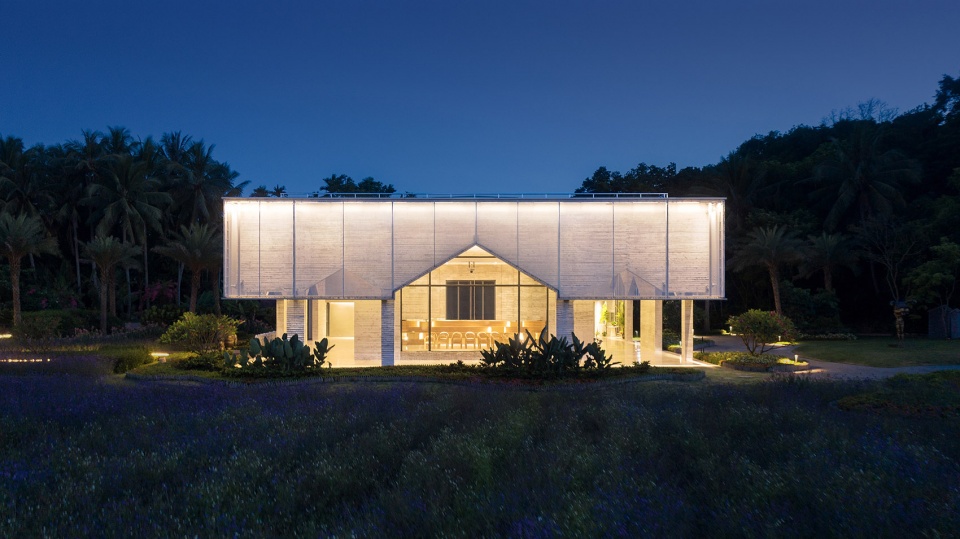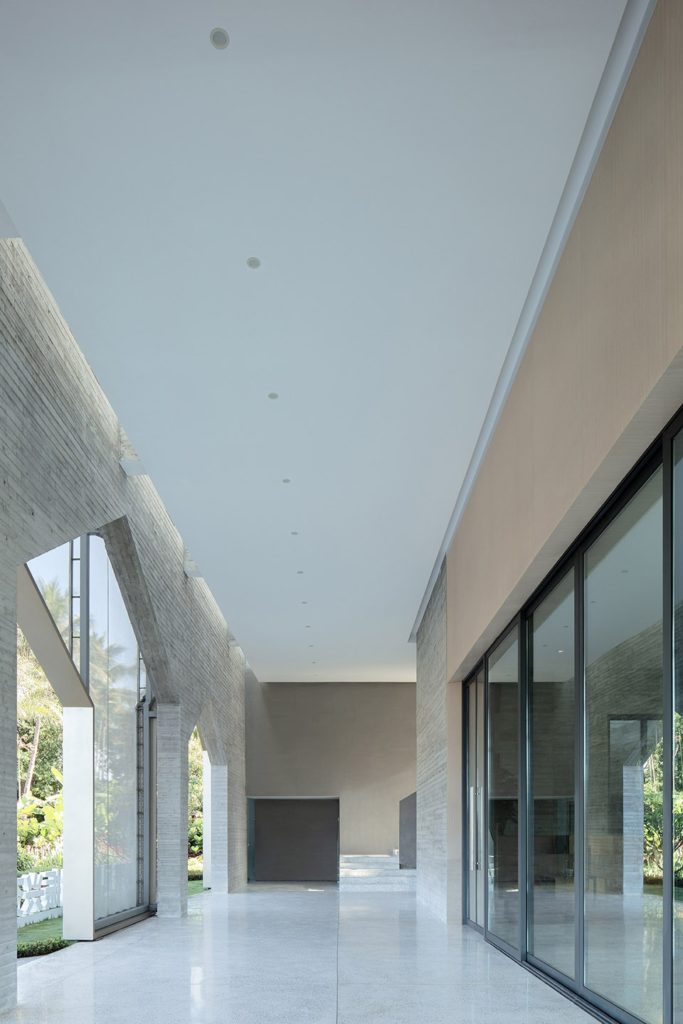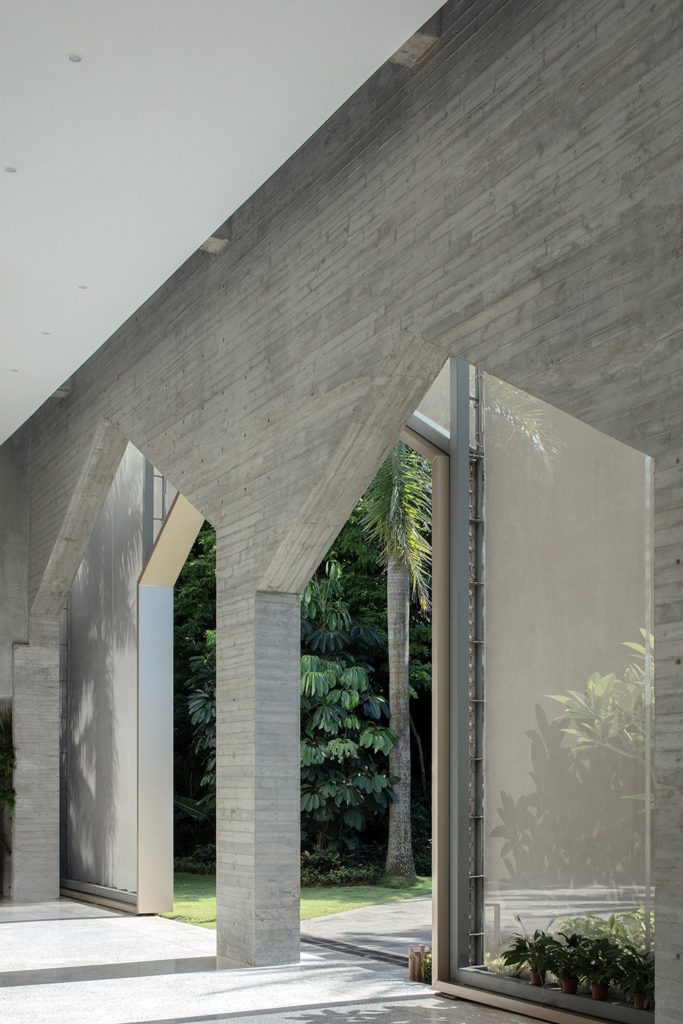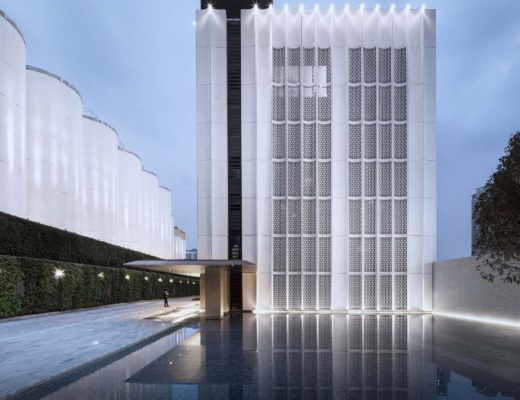The Wanquan River is the third biggest river in Hainan province, China, which flows down from the Fengmen Ridge of Wuzhi Mountain and meanders eastward to the South China Sea at Boao Town. The village of Nanqiang at the edge of the estuary delta is the last village that the river passes before it runs into the sea, and is also a natural village that sits closest to the Boao Forum for Asia (BFA). In the olden days – 19th and 20th centuries – the residents of Nanqiang who went to Southeast Asia left a number of old houses in excellent shape and craftsmanship for the village, which has since become the most visible and lauded cultural heritage of the village.
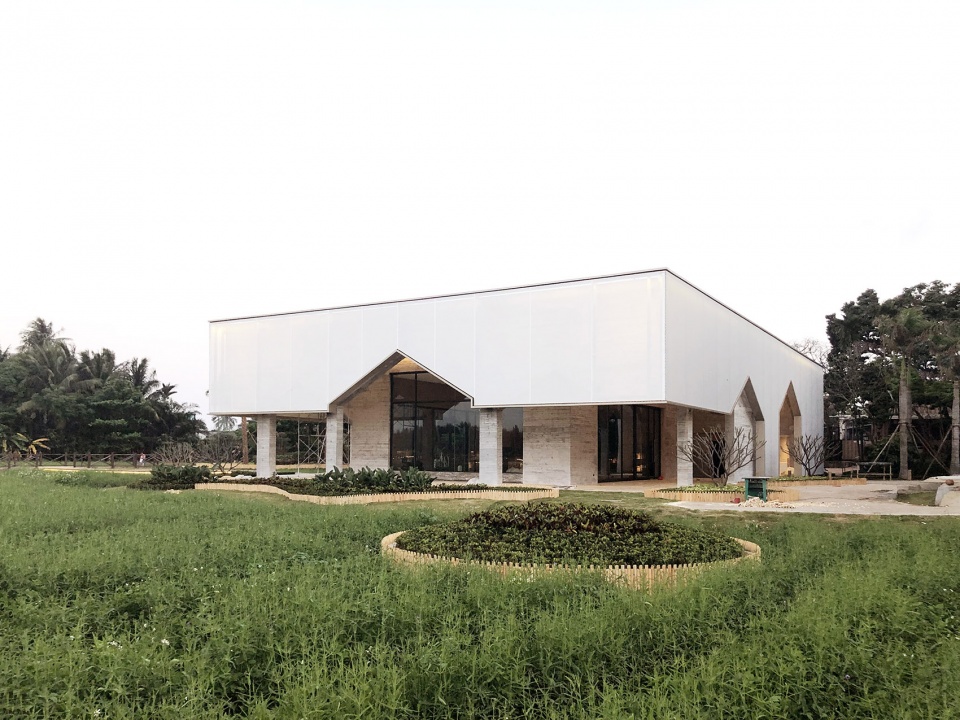
The architect Li Chi Studio (YOULU DESIGN) was commissioned to design a space in the village for the Forum – a constructable area that is backed by an old house and faces a large flower field. Relying on the international significance of BFA, the building was positioned as a multifunctional centre for international exchange to showcase the achievements of rural revitalisation in recent years and to generate broader conversations on rural development.
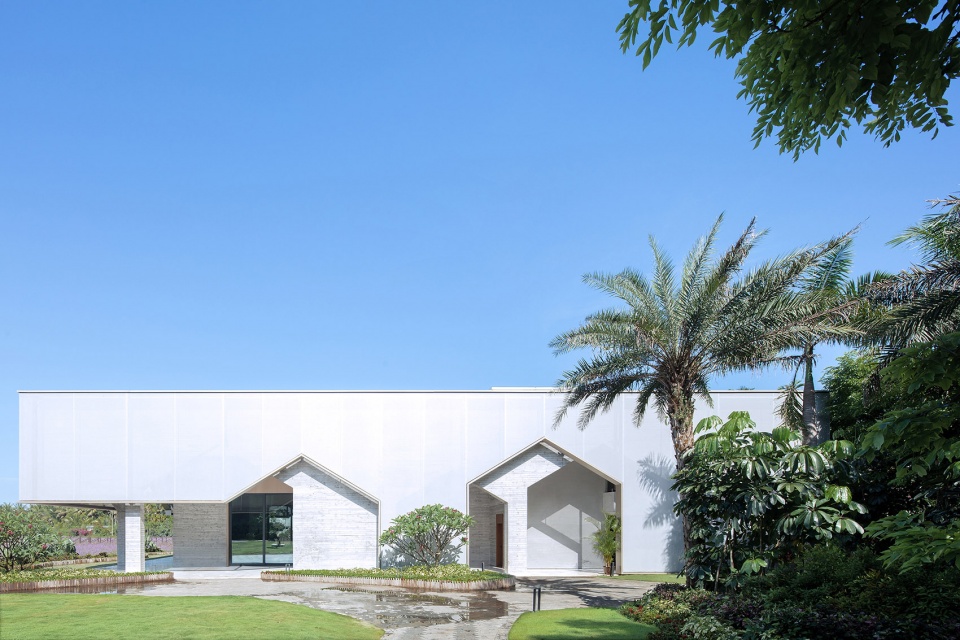
Li Chi Studio superimposed the “silhouette” and created overlapping layers with double skins, using two strongly contrasting materials: the plain and massive light concrete that represents the cultural context of the village; while the light, soft and semi-transparent fabric implies its bright future. When the two are overlapped, it creates an interesting detail, reflecting the many collisions of new ideas that this site is privy to.
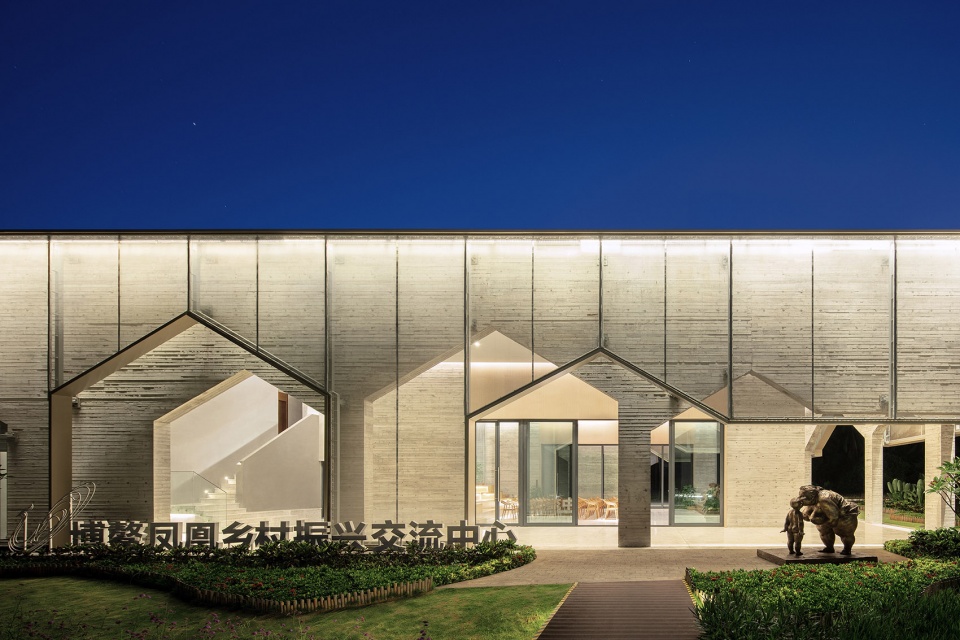
The two overlapping facade skin create varied effects under different weather and natural lights: On a sunny day, the flat fabric skin will have an aluminium effect due to its special coating on the surface, together with the raw concrete, the materiality of the facade gives a sense of sculpture to the building; when it is overcast, and the reflection of natural light is weak, the surface presents the texture of fabric and the greyish white of the original material, which blends with the colour of the sky, like a castle built with curtains. When it is cloudy, the surface presents the texture of fabric and the greyish white of the original material.
At night, when the lights are on, the outer skin of the building becomes completely transparent, revealing the entire concrete wall, which looks completely different from its daytime appearance and offers a new perspective.
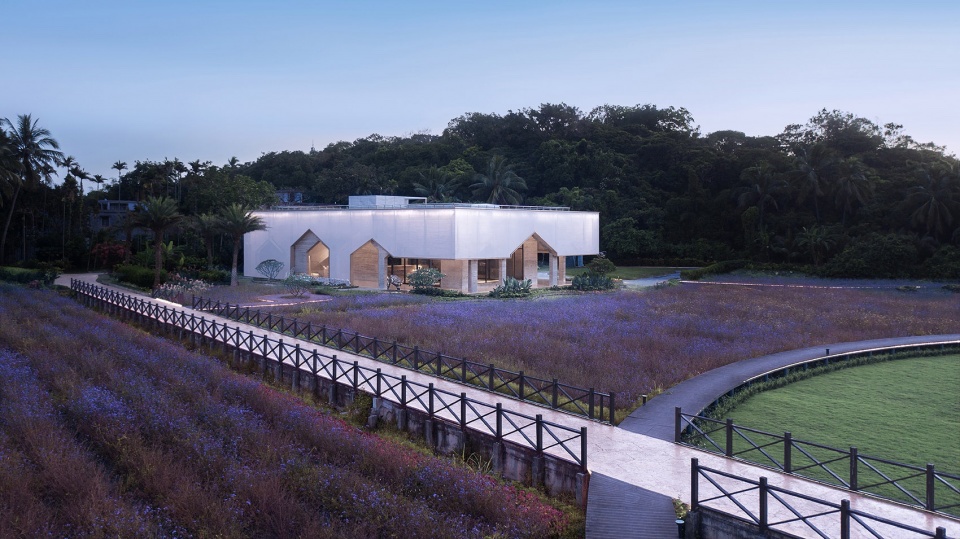
The use of the fabric skin is inspired by the local textile industry. The architect found a special woven material that looks like ordinary linen but is lighter and softer, evoking a sense of rustic beauty. The customised weaving creates the fabric with an opening rate of approximately 40%, which not only blocks more than half of the direct sunlight like window blinds, but also gives enough transparency for people to look from inside to the outside. Due to the tack effect created by the two layers of skins, some of the heat will be dissipated by the airflow, leaving the interior with a cool ambience.

It was a process of crafting when installing the fabric skin; except for the plastic welding, the only way to fix two adjacent panels of fabric was to deploy the original roping technique. The chief architect, Mr Li, studied four different ways to tie the knots and then how to conceal them. The prestress of the tightened fabric can reach more than 2,000 N/m2, which is strong enough to withstand the typhoons that attack Hainan several times per year.
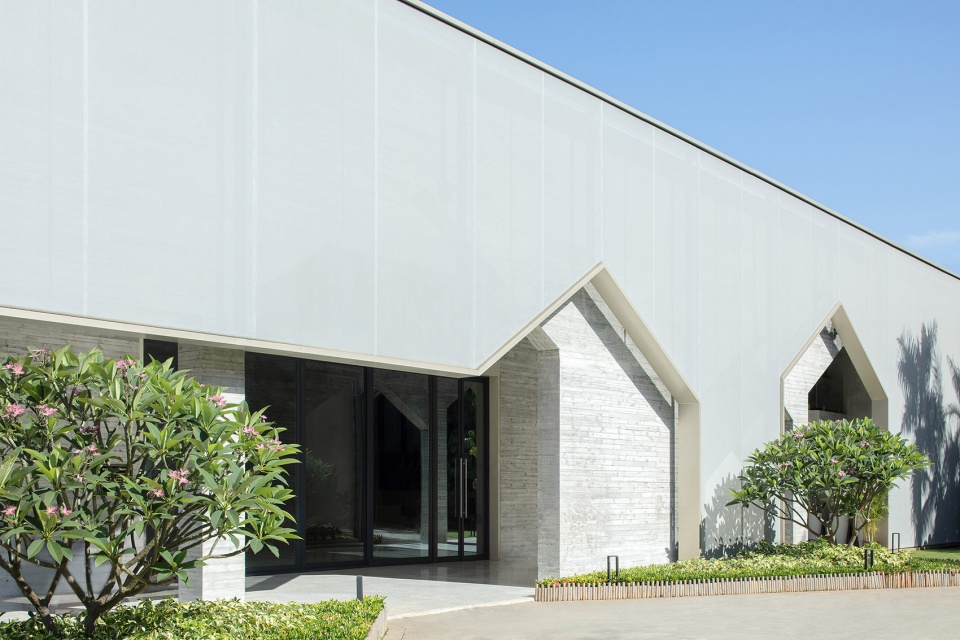
“The overall design concept pays tribute to the rural context of the village,” says Mr Li. “As a public building, it has a big volume and cannot be simply applied as with the scale of regular residences; but when we extracted the image of typical Qionghai residence from the old houses, simulated the original residential cluster on the site and then “removed” it, it left the “historical silhouette” of the traditional architecture and representing it in a modern and public building.”
It was a process of crafting when installing the fabric skin: Except for the plastic welding, the only way to fix two adjacent panels of fabric is the original roping technique. The architect studied four different ways to tie the knots and then how to hide the knots, finally succeeding in laying out the garment on the concrete wall in a flat manner. The prestress of the tightened fabric can reach more than 2,000 N/m2, which is strong enough to withstand the typhoons that attack Hainan several times per year.

In addition to the overlapped shadows on the exterior of the building, the architect also introduced and superimposed the original rural scenery into the interior space. A landscape of 100 acres of flower fields replaced the original background wall of the stage. Meanwhile, to avoid the adverse effects caused by the excessive brightness of the background, the architect has opened large areas of skylights to introduce natural light into the hall.

High eaves corridors around the hall provide an open and public gray space inside the building. The irregular outlines of the eaves framed the views to the flower field while directing the people’s views to the circular stage in the center of the field. the irregular outlines of the eaves framed the views to the flower field
After the building was completed, the architect designed a B&B house and a multi-functional restaurant on the other end of the field, as well as an arc-shaped plank road to connect each building and a few installations with landscape for people to stop for a rest. All of them together constitute a cluster of supporting facilities for seminars, media conferences, catering and accommodations.
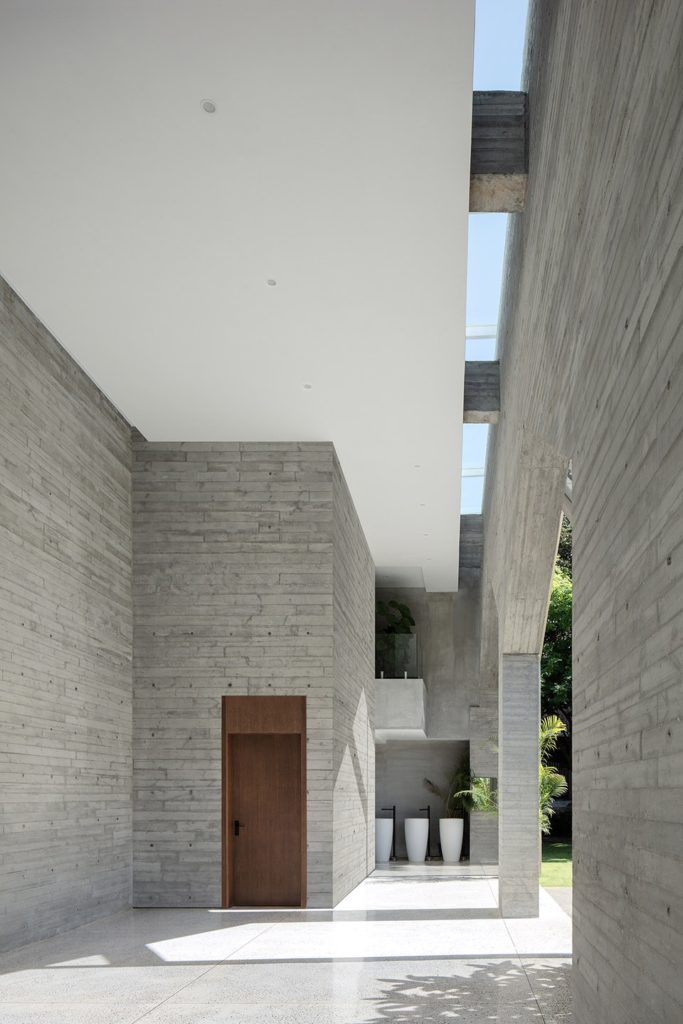
During the Boao Forum for Asia that happened not long ago, this newly built Phoenix Countryside Revitalization Exchange Center was designated as the Beautiful Countryside Livingroom, the only third-party theme venue for the Forum. Several significant high-level dialogues on countryside development were hosted in this building, the B&B and other facilities also functioned as the reception and accommodations for the representatives of the government and media.
The building is seen as a physical representation of the fading typologies of old houses in a metaphorical way.
Project details:
Project Name: Boao Phoenix Countryside Revitalization Exchange Center
Project Location: Nanqiang Village and Dalupo Village, Boao County, Hainan Province
Area: 1,454m2 architecture design and 118,548m2 landscape design
Design Company: ChiLi Studio
Chief Architect: Li Chi
Project Planner: Xu Weifeng, Li Chi
Construction Drawing Design: Jianxue Architecture and Engineering Design Institute
Corporate Design Team: Hu Jingyuan, Han Zhengyu, Chen Min, Wei Xinhua, Zhang Nan
Façade Design: Façade Studio
Façade Construction: Shanghai Taiyo Kogyo Co. LTD
Photography: Xia Zhi, Li Chi
Facade material: Serge Ferrari
You might also like:

